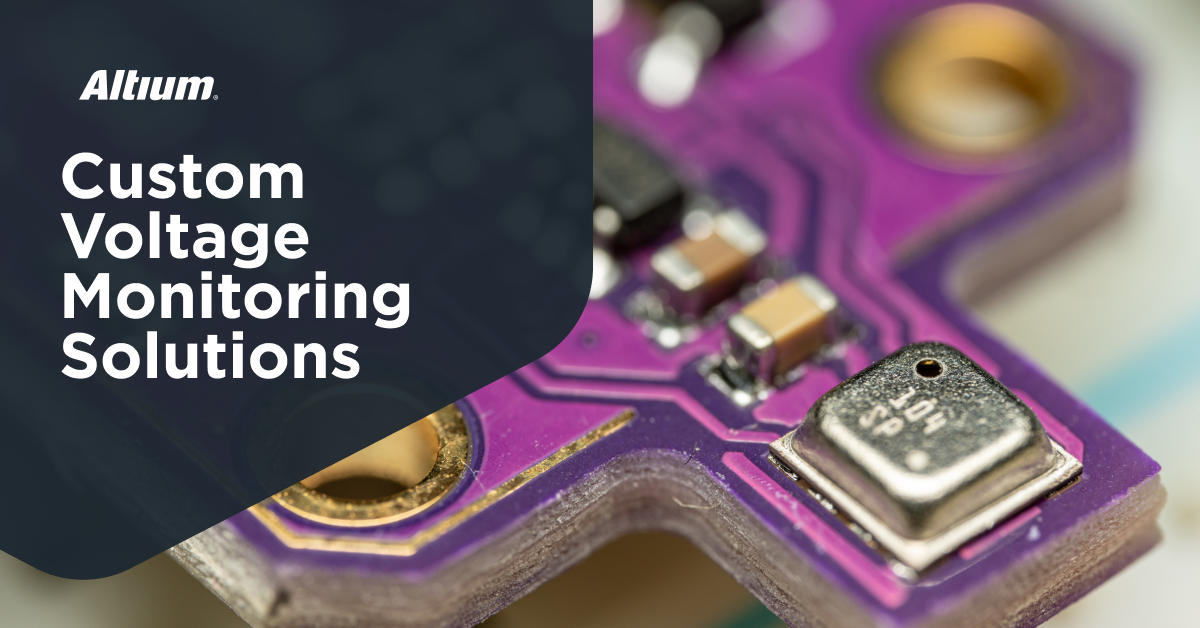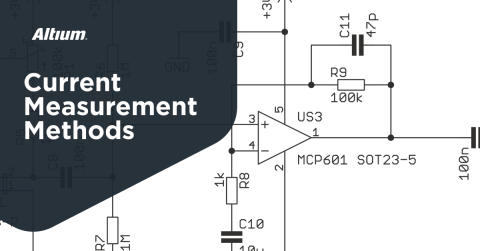Voltage Monitoring Made Simpler With Mixed-Signal Processors

The goal of voltage monitoring is often to identify fluctuations or surges that can damage equipment in power electronics. However, voltage monitoring is not only performed in power electronics; it can be used in sensing or specialized applications in precision measurement. Voltage monitoring in these applications relies on a very small list of components and circuits, but these designs can take up a lot of board space on the PCB. It often involves discrete logic circuits or a specialty ASIC paired with a microcontroller.
There are simple methods for performing voltage monitoring with basic analog components or more precise continuous monitoring with an ADC. No matter which approach is taken to implement voltage monitoring, there are ways to implement these circuits with an extremely small footprint while also incorporating additional logic conditions and reprogrammability. We will show you how in this article.
Simple Voltage Monitoring With Comparators
The simplest way to implement voltage monitoring is with a comparator circuit using a stable reference voltage. Voltages in sensor systems, power electronics, and analog devices can fluctuate over time and may only require an alarm or notification when the voltage exceeds some threshold. A comparator circuit with a stable reference voltage allows for this type of voltage monitoring and detection.
Comparator circuits are readily available in standard IC packaging or can be built from op-amps. Positive feedback will then force the output high when the incoming voltage is above the reference and low when the incoming voltage drops below the reference.
Common comparator circuit reference voltage configurations (feedback not shown). [Source: Anito Circuits]
The comparator essentially assigns a binary logic state as a single bit. If the input voltage is above the reference voltage threshold, then the output is HIGH. The same idea applies in voltage monitoring with multiple thresholds, which would be accomplished with multiple comparators in parallel or with a window comparator. In this case, the logic state associated with the voltage amplitude is HIGH when between two thresholds (or outside two thresholds) and LOW otherwise.
Continuous Monitoring With an ADC
The next approach for voltage monitoring is to perform continuous monitoring with an ADC. An ADC is normally used when a voltage needs to be measured to high accuracy over an extended period of time. The specific value of the voltage at any given point in time is desired, often with some filtering and averaging to eliminate the influence of noise. When reference voltage values and quantization in an ADC are compared with accessible hysteresis values in comparators, we find that similar levels of noise immunity are accessible with both approaches, with the difference being the comparator does not give a specific value for the voltage at any point in time.
In a voltage monitoring application, the monitored signal is often noisy or it could be varying significantly around some median value. The challenge with an ADC or in the application is to report or determine the median value or at least assign logic states to the reported value. This can be done in several ways:
- Use an ADC with design with small ENOB
- Average multiple readings in your firmware
- Apply thresholding in firmware while continuously monitoring
This architecture would have the block diagram shown below.
Here, an MCU is required to run the embedded application and capture data from the ADC. This gives the opportunity to perform items number 2 and 3 listed above. The smallness of the block diagram masks the true size of these designs, which require reference voltage sources, low-noise power supplies, and filtering components for the analog power and signals.
Voltage Monitoring ICs
There are also dedicated ICs in standard packages which perform voltage monitoring and alarm functions. For example, many battery voltage tracking ICs are essentially voltage monitoring ICs. These ICs may perform continuous monitoring with integrated ADCs, with the output provided over a serial interface (typically I2C). Simpler topologies function as arrays of comparators, which then provide alarm outputs over GPIOs. Some voltage monitoring ICs may be programmable over a serial interface.
Despite appearing as all-in-one solutions for voltage monitoring, some of these devices actually require additional complex circuitry, such as:
- External filter circuits
- External oscillators
- Precision reference voltages
- Multiple supply voltages
- Temperature sensor
Of course, there are also highly compact voltage monitoring ICs, but these are typically just comparator circuits with some additional features (enable, reset, etc.).
Mixed-Signal Processors
The easiest way to access feature-rich voltage monitoring capabilities without the additional circuitry of ADCs or voltage monitoring ICs is to use a mixed-signal processor. These processors provide integrated analog circuitry and logic functions needed to build a custom voltage monitor IC in a compact package.
These processors can provide voltage monitoring with an ADC or comparator circuitry, and subsequent processing with integrated custom logic (CPLD functionality). Renesas offers best-in-class mixed-signal processing for a variety of applications with GreenPAK, a set of integrated circuits and a graphical development suite for building custom mixed-signal processors.
GreenPAK components include other features which are not included in any of the above options, such as:
- Programmability and reprogrammability of logic cells
- Real-time programmability of reference voltages and hysteresis windows
- Standard digital logic functions (clocks, LUTs, flip-flops, gates, etc.)
- Mixed-signal I/Os in a customizable pinout
Learn more about GreenPAK in our recent podcast episode.
The mixed-signal processor components and developer tools in Renesas GreenPAK give designers the ability to develop fully custom digital, analog, or mixed signal ICs. These programmable mixed-signal processors allow consolidation of functions found in clock and signal management circuitry, allowing for smaller, more efficient systems. To learn more, take a look at the GreenPAK components and reference examples.
Whether you need to build reliable power electronics or advanced digital systems, use the complete set of PCB design features and world-class CAD tools offered by Altium to implement your GreenPAK solutions. Altium provides the world’s premier electronic product development platform, complete with the industry’s best PCB design tools and cross-disciplinary collaboration features for advanced design teams. Contact an expert at Altium today!











 Back
Back